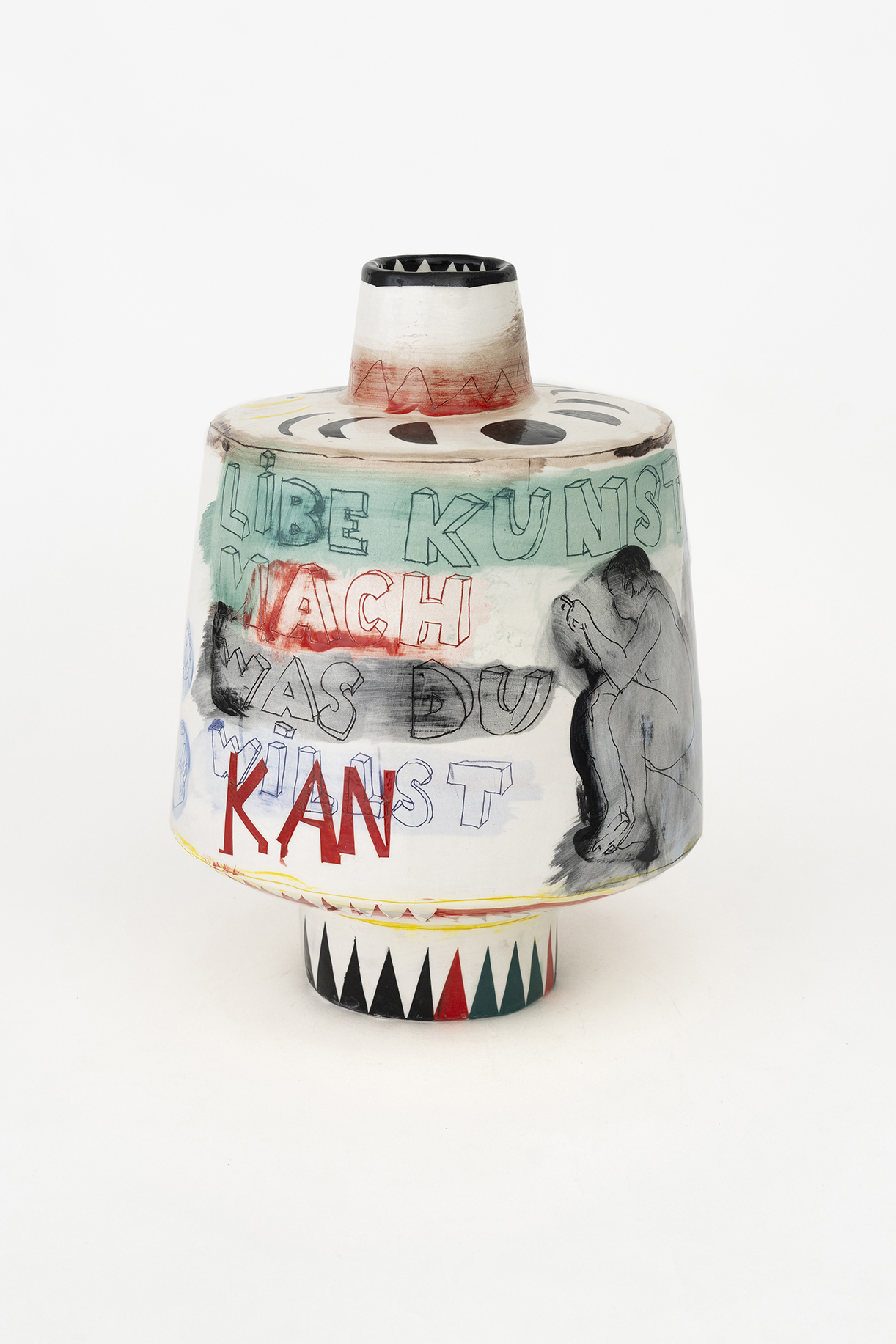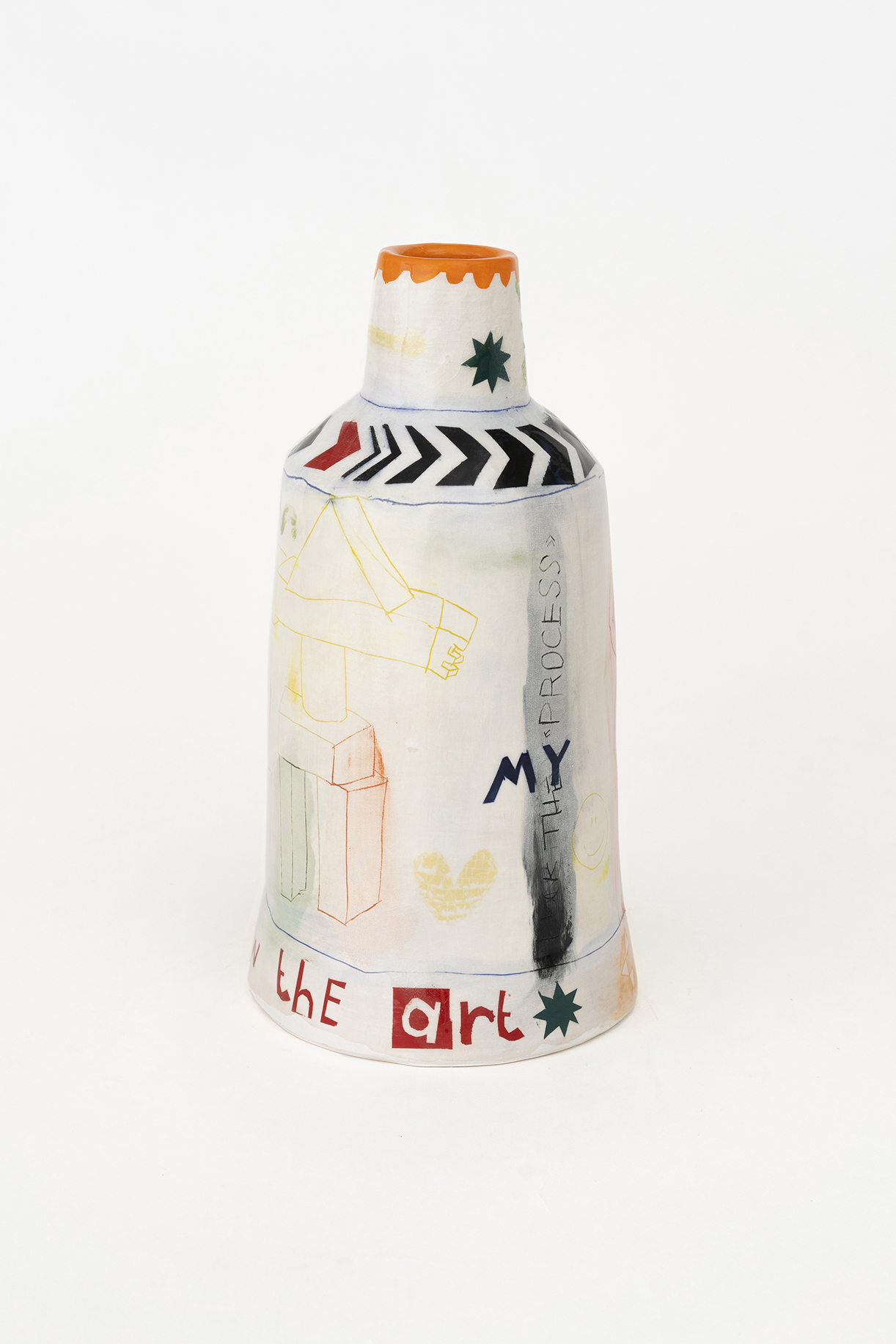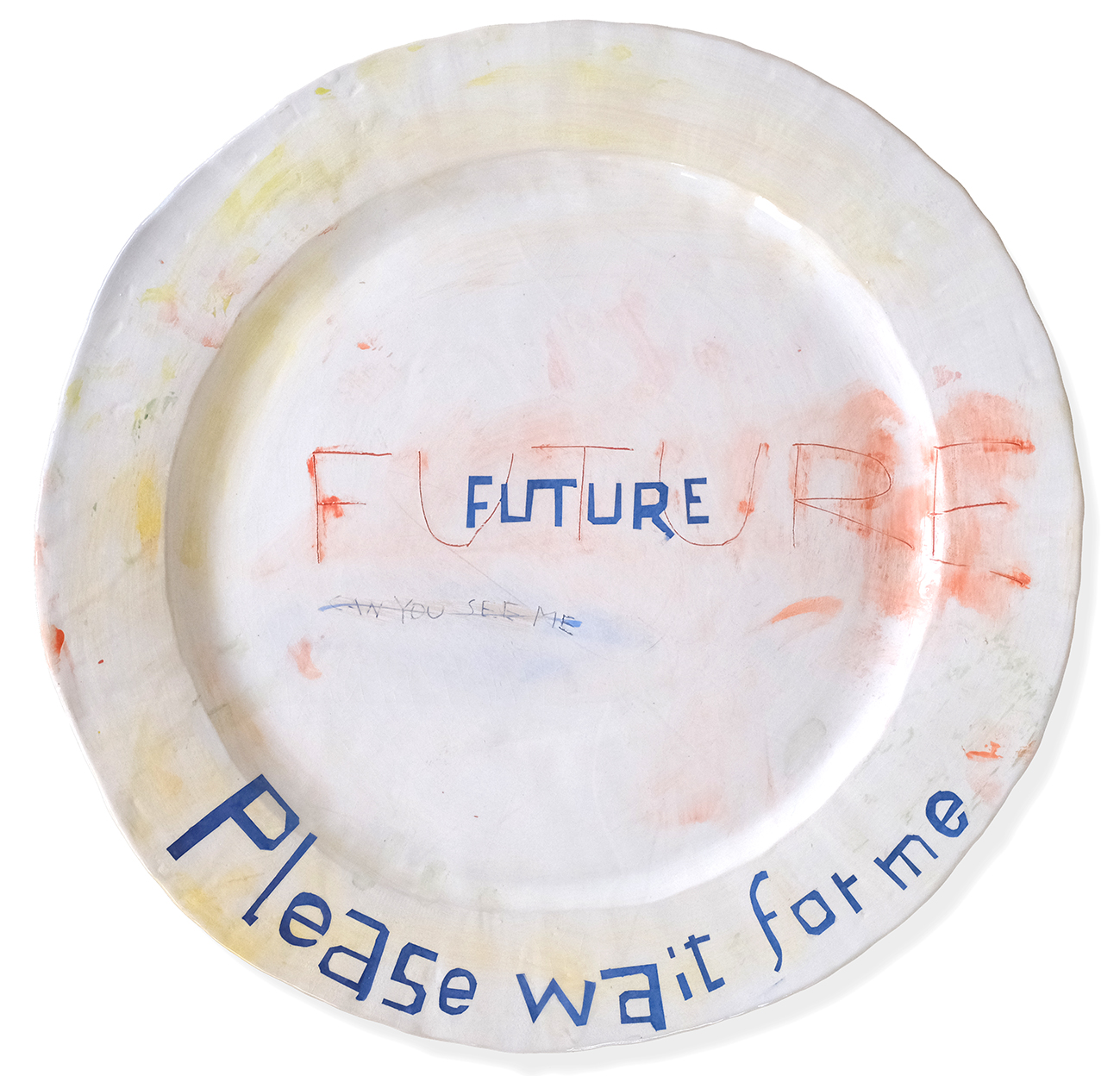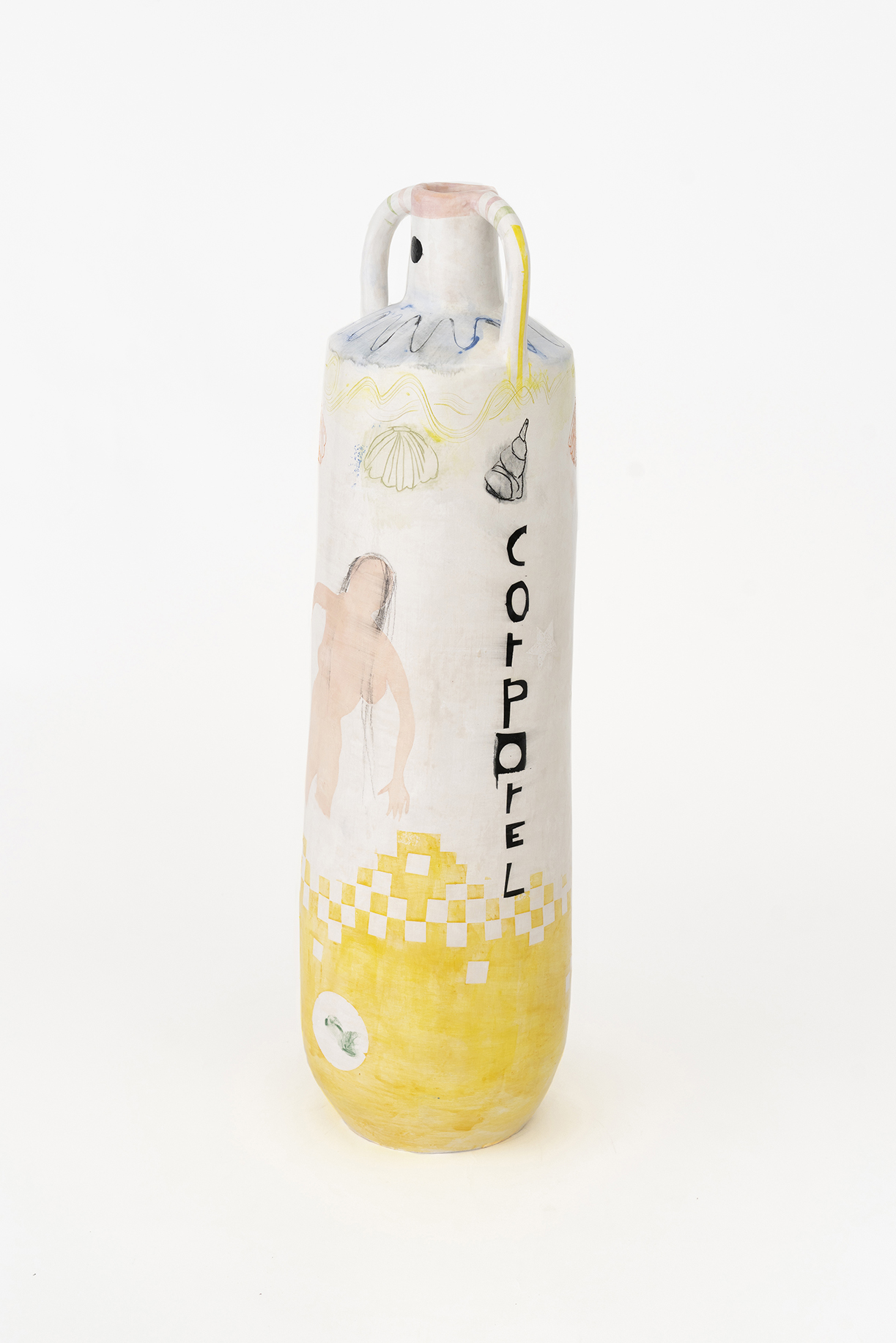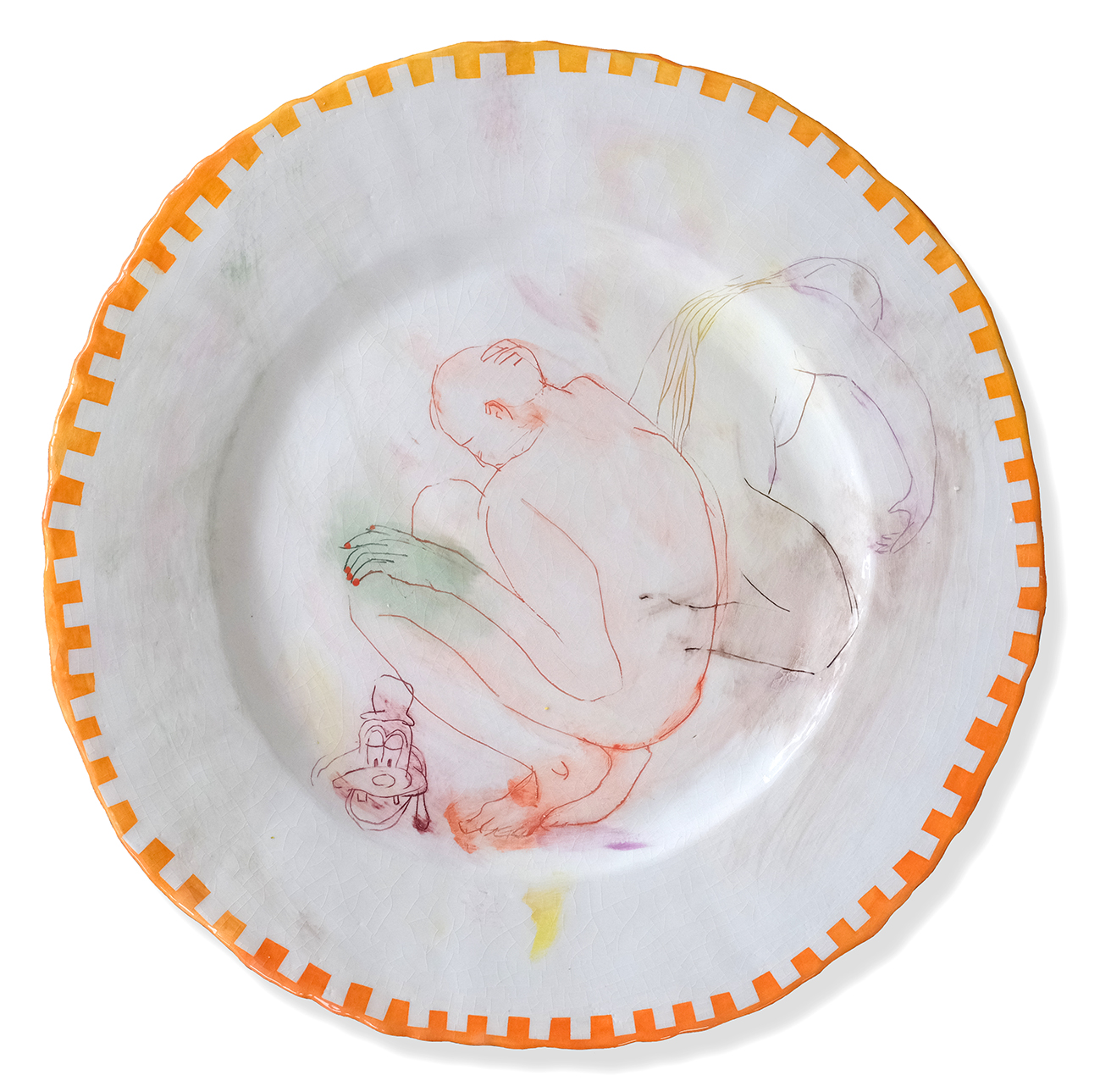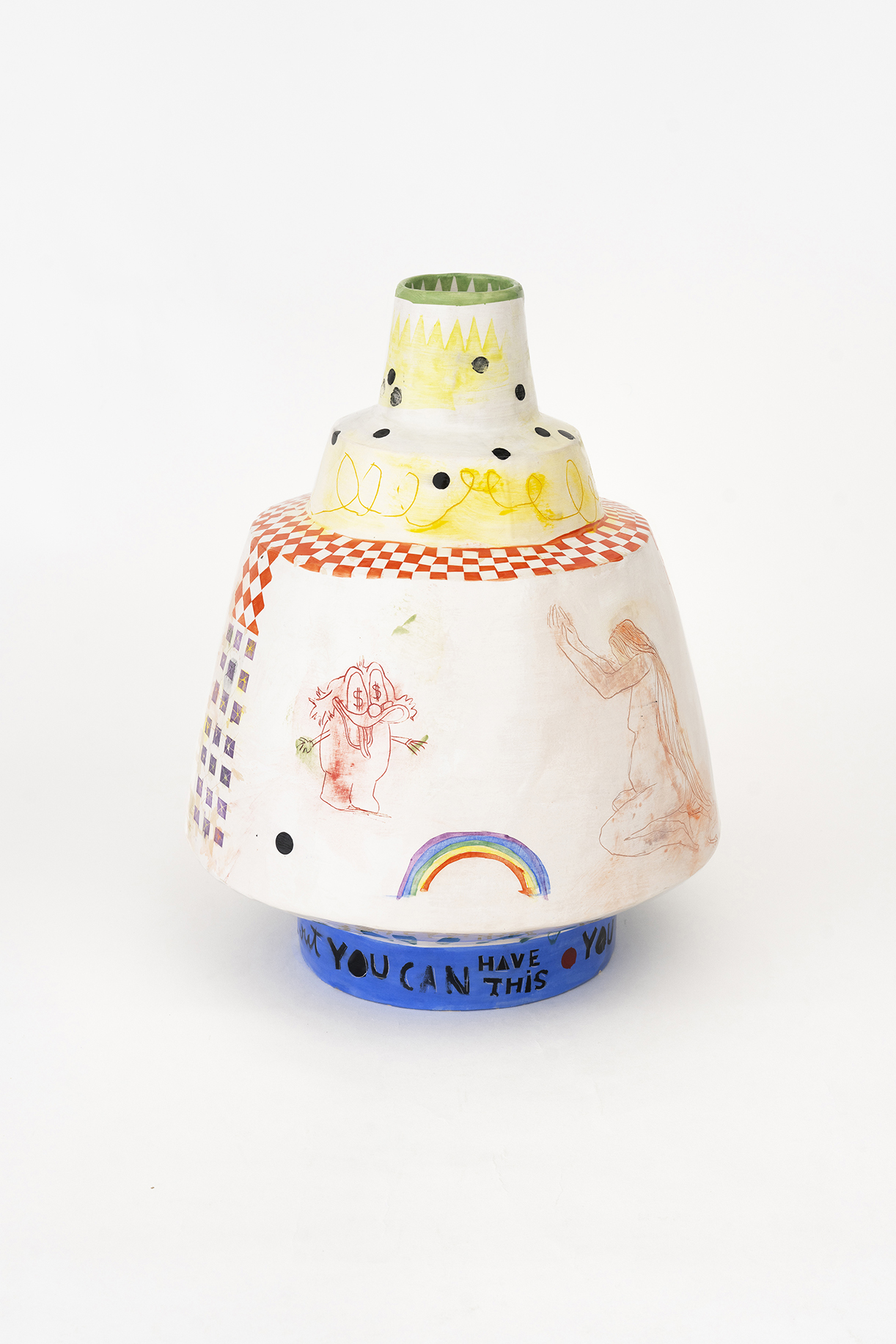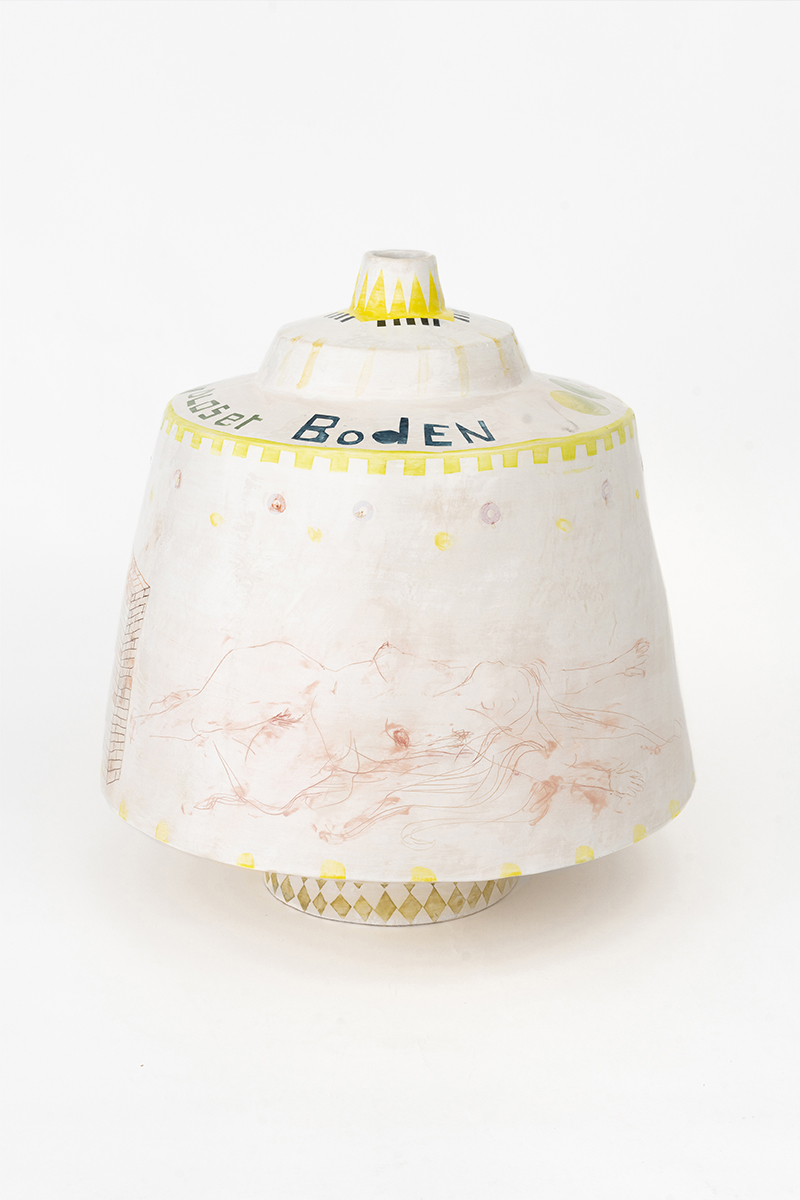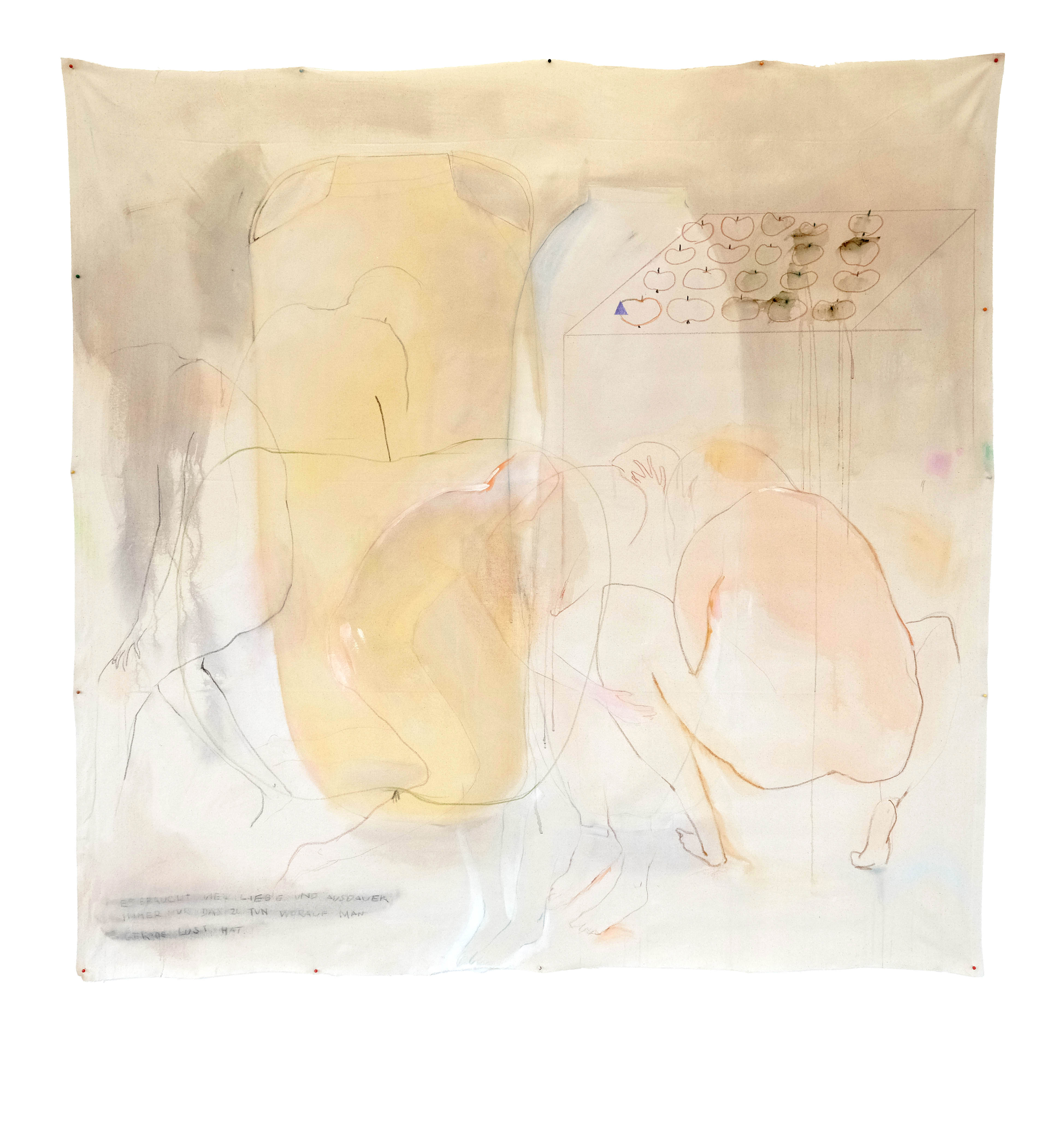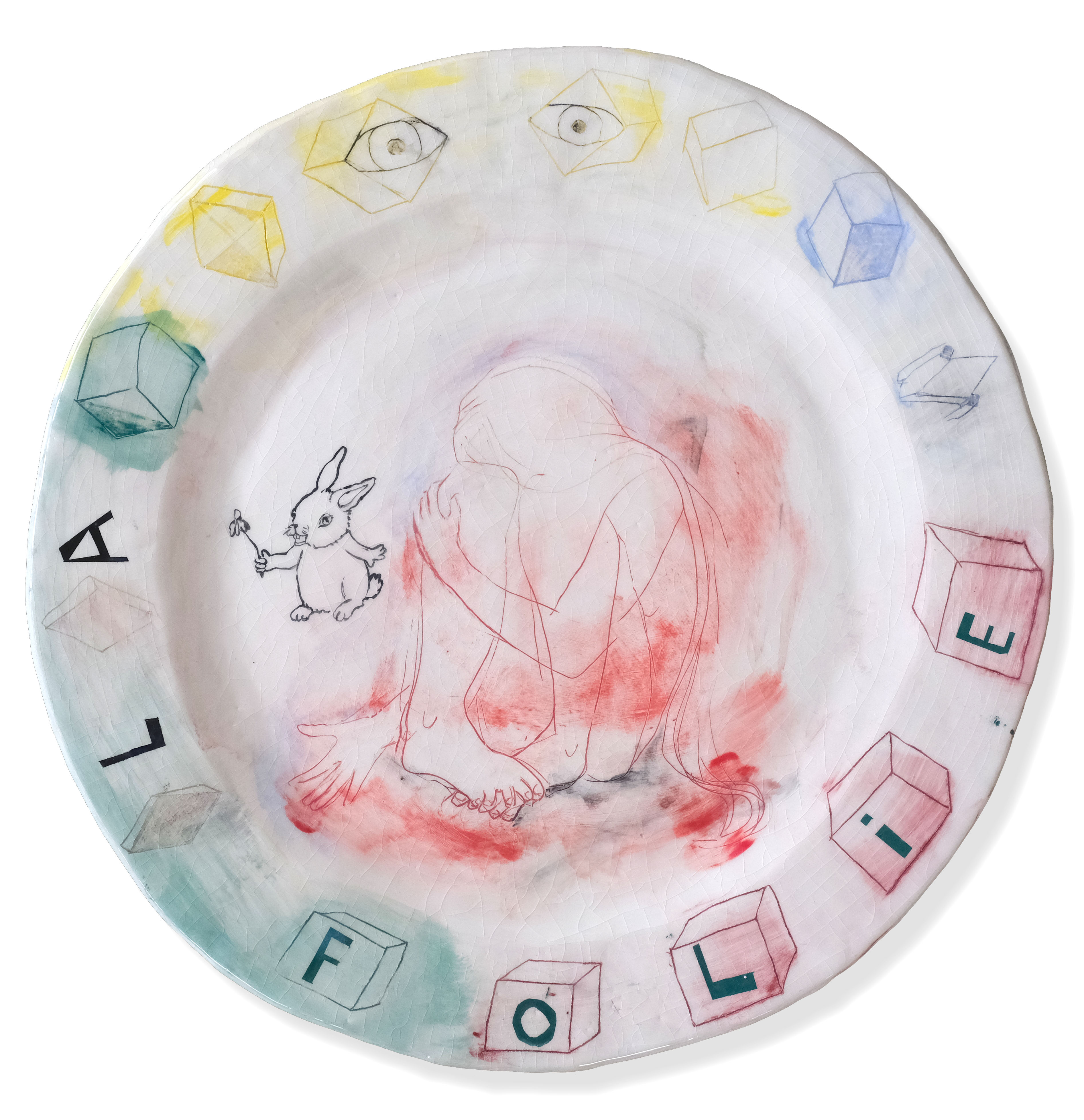YVONNE ROGENMOSER
FUTURE – can you see me
PLEASE WAIT FOR ME
27.09 –
16.11.2024
SECOND NATURE PROJECTS
PFINGSTWEIDSTR. 31
8005 ZÜRICH
Various elements on these vases draw the viewer's eye, inviting an instinctive search for order—a distinctly human tendency. However, once the initial impressions settle and these multifaceted worlds are explored, a question naturally arises: how are these pieces crafted? Yvonne Rogenmoser constructs her ceramics entirely by hand, a non-traditional approach that grants her significant creative freedom— a freedom she embraces in multiple ways. In her latest series of vases, Rogenmoser expands her repertoire of forms and motifs. The familiar visual themes from her earlier works now include the human body, with nudes signaling a shift toward the personal and intimate. The depiction of skin symbolizes vulnerability and fragility—concepts mirrored in the delicate nature of ceramics. Vessels, in fact, are akin to human bodies: it’s no coincidence that we refer to the “belly,” “neck,” or “foot” of a vase.
Also new in this series are graphic elements such as textual fragments and ornamental patterns, which Rogenmoser applies using stencils. In contrast, the figurative elements are etched into the surface using the traditional sgraffito technique, where designs are scratched into the leather-hard clay coated with white slip. After the initial firing, paint is rubbed into the incised lines, with the excess wiped away using a sponge. Even after glazing and the second firing, the traces of this process remain visible, adding depth and texture to the surface. Rogenmoser’s intuitive process governs the composition and selection of motifs, blending two seemingly opposing realms: the emotional landscape of human experience and the everyday banality of life. She intentionally plays with the coexistence of levity and introspection.
Yvonne Rogenmoser’s vessels are repositories of many worlds: the mundane and the remote, the familiar and the dreamlike. More than mere carriers of imagery, these vases hold the potential for untold narratives. Borrowing a term from American author Ursula K. Le Guin, they can be seen as "carrier bags" of culture, imbued with a light yet profound exploration of the human condition.
Susanna Koeberle





Photography: Claude Barrault
